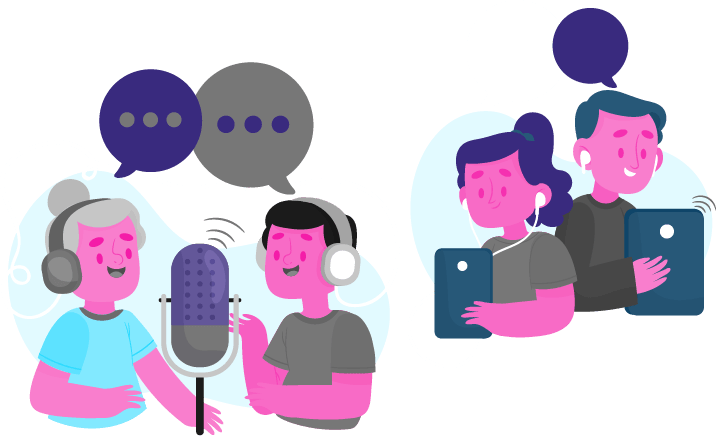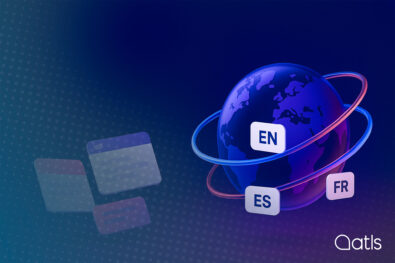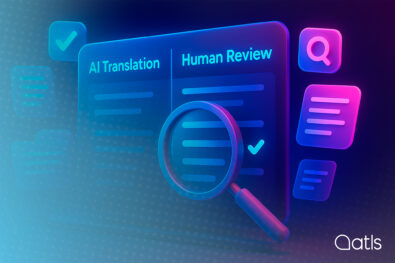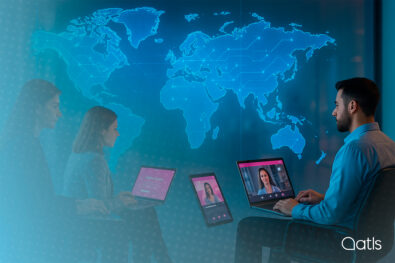In today's globalised and hyperconnected world, multilingual communication has become a decisive factor for the success of companies, institutions and organisations. Relying on a shared language is no longer enough in many scenarios.
From an international summit to a strategic corporate meeting, it is essential to ensure that every message is conveyed with accuracy, fluency and cultural sensitivity.
This is where professional interpreting comes in, a language service that enables understanding between speakers of different languages and adapts to each situation through its various modes.
Not all communication needs are the same: a large-scale conference, a business negotiation, an online training session or an institutional press conference each require different approaches to ensure smooth and effective communication.
In recent years, remote interpreting has also transformed the sector, offering a flexible, digital alternative that overcomes geographical barriers and makes it easier to organise hybrid or virtual events without compromising on linguistic quality.
In this ATLS guide, we present the main interpreting modes, their features, advantages and the contexts in which they are most appropriate, so that you can identify the best solution for your company or organisation.
Simultaneous interpreting

Simultaneous interpreting is one of the best known and most widely used modes internationally. This approach involves the interpreter rendering the speech in real time, keeping pace with the speaker without interruptions or pauses. Specialised technical equipment, such as soundproof booths, microphones and receivers with headsets, makes it possible for interpreters to work with full concentration while participants listen to the translation in their own language.
This type of interpreting is essential at international congresses, academic conferences, political summits and large-scale corporate events, where people from different countries and languages come together. Thanks to its fluency, communication remains seamless and the event can go ahead with the same dynamism as if all participants shared a common language.
A variation of this mode is with the use infoport, a portable system which replaces the traditional booth with mobile equipment consisting of a microphone and wireless receivers. It is ideal for guided tours, internal training sessions or small meetings where simultaneous interpreting is needed without the complexity of a full technical set-up.
Main advantages of simultaneous translation:
- Maximum speed and fluency, as the translation takes place instantly.
- Preserves the natural flow and rhythm of the original speech, avoiding unnecessary pauses.
- Makes it possible to include large multilingual audiences without extending the duration of the event.
When to use simultaneous translation
Simultaneous interpreting is the best option when a large audience needs real-time translation, especially in contexts where immediacy and accuracy are crucial.

👉 Thanks to its efficiency and versatility, simultaneous interpreting is one of the most in-demand modes at congresses and international forums, making it the ideal solution for large-scale multilingual environments.
Consecutive interpreting
Consecutive interpreting is a mode in which the interpreter listens carefully to the speaker, takes strategic notes and delivers the message in the target language once the speaker pauses. Unlike in simultaneous interpreting, here the speech is conveyed in turn, allowing the interpreter to provide a more detailed and nuanced translation.
This type of interpreting stands out for its accuracy and fidelity, as it conveys not only the spoken content but also cultural nuances, the speaker's intentions and the emotional tone of the message. It is particularly useful in contexts where clarity and accuracy take precedence over immediacy.
Main advantages of consecutive interpreting:
- Provides a high level of accuracy thanks to note-taking and memory techniques.
- Preserves the cultural and expressive nuances of the original speech.
- Does not require complex technical equipment, making it easier to organise.
When to use consecutive interpreting
Consecutive interpreting is the most suitable option for press conferences, institutional meetings, political negotiations, court hearings or official ceremonies, where accuracy and formality are paramount.
👉 Because of its ability to faithfully convey both the content and the speaker's intent, consecutive interpreting is highly valued in diplomatic and professional settings that demand the utmost seriousness and credibility.
Bilateral or liaison interpreting

Bilateral interpreting, also known as dialogue or liaison interpreting, is mainly used in contexts where communication takes place between two parties or within small groups. In this mode, the interpreter translates short segments in turn, ensuring that each participant fully understands what the other is saying.
It is a dynamic, close form of interpreting that facilitates direct dialogue and creates a more natural, fluid atmosphere. Since it does not require technical equipment or booths, it is particularly practical in professional, business or institutional settings where agility and trust are essential.
This mode also includes telephone interpreting, which connects two or more speakers of different languages via a phone call. It is a highly effective solution in contexts where immediacy is key, such as hospitals, clinical trials or international support services.
Main advantages of bilateral or liaison interpreting:
- Promotes direct interaction between participants without unnecessary interruptions.
- Does not require technical equipment, simplifying logistics and reducing costs.
- Easily adapts to different contexts: from an interview to an inspection visit.
When to use bilateral or liaison interpreting
Bilateral interpreting is ideal for business meetings, job interviews, negotiations, company visits or diplomatic engagements, where smooth, personalised communication is essential to build trust and reach agreements.
👉 It is one of the most widely used modes in B2B meetings and international trade missions, where every detail can make the difference in decision-making and the success of a negotiation.
Whispered interpreting
Whispered interpreting is a mode characterised by its discreet and immediate nature. In this case, the interpreter sits or stands very close to the listener—usually one or two people—and translates the speaker's words quietly, in real time and without interruptions.
This technique is particularly useful in situations where most participants share the same language but a small minority require translation. In this way, the flow of the event is not disrupted while ensuring that everyone can follow the discussion.
Main advantages of whispered interpreting:
- A discreet mode that does not interfere with the course of the event.
- Provides immediate and effective translation, keeping pace with the original speech.
- Does not require technical equipment nor complex logistical preparation.
Whispered interpreting is recommended in situations where only one or two people need translation, such as executive meetings, institutional events, board meetings, guided tours or specialised training sessions.
👉 Although it is not suitable for lengthy events or larger groups, it is a practical and flexible solution for ensuring linguistic inclusion in small formal or corporate settings.

Remote interpreting: the great revolution
Remote interpreting, commonly known by its English acronym RSI (Remote Simultaneous Interpreting), has brought about a genuine revolution in the world of multilingual communication. Thanks to technological advances and the growth of digital platforms, this mode allows interpreters to work from anywhere in the world, connecting virtually at the same time as the event participants.
In practice, interpreters listen to the speaker's intervention through the online platform and deliver the translation live, just as they would in a physical booth—but entirely remotely. This enables companies, institutions and organisations to host virtual, hybrid or international events without the need to bring interpreters or attendees on site, resulting in significant cost savings and far greater efficiency in resource management.
Main advantages of remote interpreting:
- Total flexibility, as interpreters and participants can connect from any location.
- Significant cost reduction associated with travel, accommodation and technical logistics.
- Global scalability, making it possible to host multilingual events with participants based in different countries.
- Integration with digital platforms that support interactivity, recording and live streaming of the event.
When to use remote interpreting
Remote interpreting is particularly recommended for webinars, hybrid conferences, international online congresses, global corporate meetings, online training sessions and digital product launches—settings where the virtual format makes it easy for an international audience to take part without geographical barriers.
👉 Today, remote interpreting is regarded as one of the most innovative and fast-growing modes, as it combines the linguistic quality of professional interpreters with the efficiency and versatility of advanced technology, offering a modern and accessible solution for global communication.
The interpreting solution your company needs
Each interpreting mode meets very specific needs: simultaneous interpreting is ideal for large international events where immediacy is essential; consecutive interpreting is best suited to formal contexts that demand precision and solemnity; bilateral interpreting facilitates understanding in small meetings and negotiations; whispered interpreting provides a discreet solution when only one or two listeners need translation; and remote interpreting opens up a world of possibilities in digital and hybrid settings, connecting global audiences without geographical barriers.
At ATLS, we offer all these interpreting modes, tailored to the specific requirements of your event and the goals of your organisation. Our team of professional interpreters, supported by the most advanced technology, ensures that your message is delivered with clarity, accuracy and fluency—always respecting cultural nuances and the communicative context.
In a world where communication is key to building trust and closing deals, having an expert partner in professional interpreting makes all the difference.
👉 Trust ATLS to make sure your voice is heard in any language, anywhere in the world.






